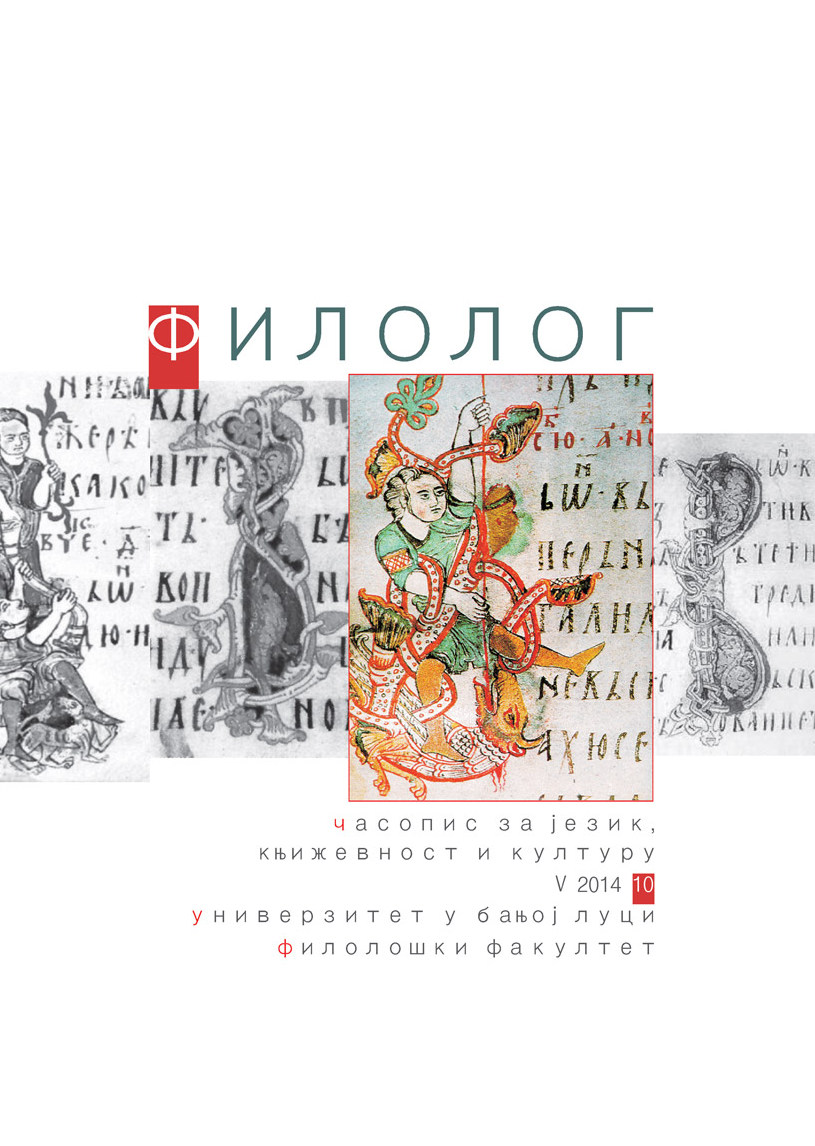
Memoires d’Hadrien : « Le portrait d’une voix »
This paper attempts at reviewing the basic guidelines, both literary and ideological, Marguerite Yourcenar followed while editing Memoirs of Hadrian.
More...We kindly inform you that, as long as the subject affiliation of our 300.000+ articles is in progress, you might get unsufficient or no results on your third level or second level search. In this case, please broaden your search criteria.

This paper attempts at reviewing the basic guidelines, both literary and ideological, Marguerite Yourcenar followed while editing Memoirs of Hadrian.
More...
This paper centers on the politics of fear and paranoia in Thomas Pynchon’s novel The Crying of Lot 49 and David Lynch’s film Blue Velvet. These artists posit narrative critiques of American culture of consumption and history of imperialism, complicating traditional ideas of race and nationhood. They provoke the very roles, rules and institutional practices that shield oppression and unfairness, enable displacement and alienation, deny subjectivity and personal identity. By underscoring a sense of uncertainty and conspiracy, Pynchon and Lynch attempt to understand paranoia as a symptomatic condition of postmodernity. They approach it in terms of the psycho-cultural processes that induce paranoid anxiety within the depthlessness and fragmentation in postmodern society. Th roughout their work, they explore the notions of fear and terror, suggesting that America has become a world of paralysis, cultural exhaustion and death. Th e society’s rubbish and its waste, the contact with the disadvantaged, a series of objects which, like the hieroglyphic streets, have to be decoded, represent the path typically chosen by Pynchon and Lynch’s major characters. These authors produce images imbued with the apocalyptical chaos and nihilism, referring to the erosion of values, the decline of civility, the denial of truth.
More...
This paper uses the narrative analysis method in order to cover some of the aspects of the novel, What you have always wanted by Gordana Ćirjanić. Those are mostly the formal aspects that consider the narrative point of view, time and way of storytelling as well as their combinations. On the other hand, this method allows us to systematically analyse the novel and thus establish its meaning based on the premises posed by this theory. Since narratology is a jagged discipline, we decided to use Gerard Genette’s terminology, interpreted by Adrijana Marčetić. According to Marčetić, the value of Genette’s narratology is in that “it can serve as a starting point in the analysis that simultaneously pays attention to the form and meaning of a narrated text” (Marčetić 2003: 8).
More...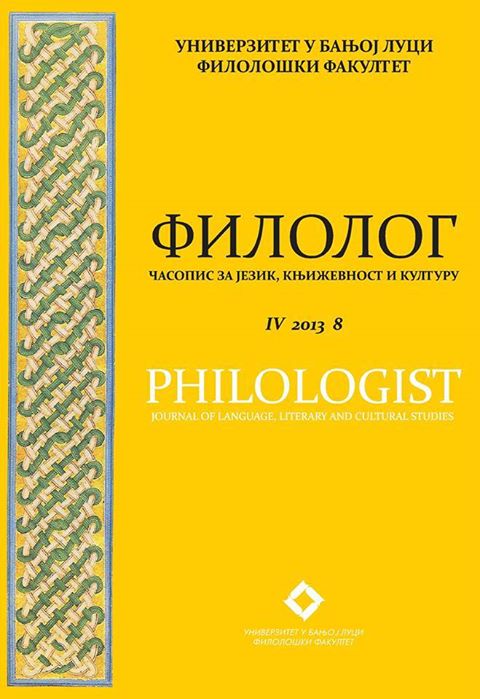
The paper is concerned with Toni Morrison’s contemporary novel Beloved, from the point of view of Sandra Gilbert and Susan Gubar’s notions of the madwoman in the attic and the anxiety of authorship. The first term refers to the rebellious female hero from the nineteenth-century women’s literature, whereas the latter concerns the fear of writing as a male profession, felt by the nineteenth-century women writers. It is precisely this anxiety that influenced these writers to create the madwoman character, who opposes the patriarchal system in a latent manner. Starting from this critical perspective and asking the question whether contemporary women’s literature also contains such anxiety, the paper focuses on the main female character of the novel Beloved, initially published in 1987. The aim is to point out the difference which separates contemporary Toni Morrison from the nineteenth-century women writers, but is not solely temporal. This difference has to do with the character of the postmodern age, but is mainly related to a shift from the manner in which the nineteenth-century women writers created their female characters. The paper analyses this literary distinctiveness, but also attempts to find a broader meaning of this originality as seen from the point of view of contemporary women’s literature and reading. By focusing on Sethe – the main character of Beloved, the paper points out that Toni Morrison breaks with the tradition maintained by her literary ancestors in that she does not divide her female characters into obedient and recalcitrant ones in relation to the patriarchal system. Instead, she creates a character who is both a motherly angel and a madwoman committing infanticide, thus making it possible for her readers to interpret the novel from the perspective of a woman with ambivalent roles and specific experience. In this way, she also deconstructs the male writing and reading rules. By doing so, Morrison conveys a message that the anxiety of authorship of a contemporary woman novelist can be if not totally cured then certainly lessened by means of writing.
More...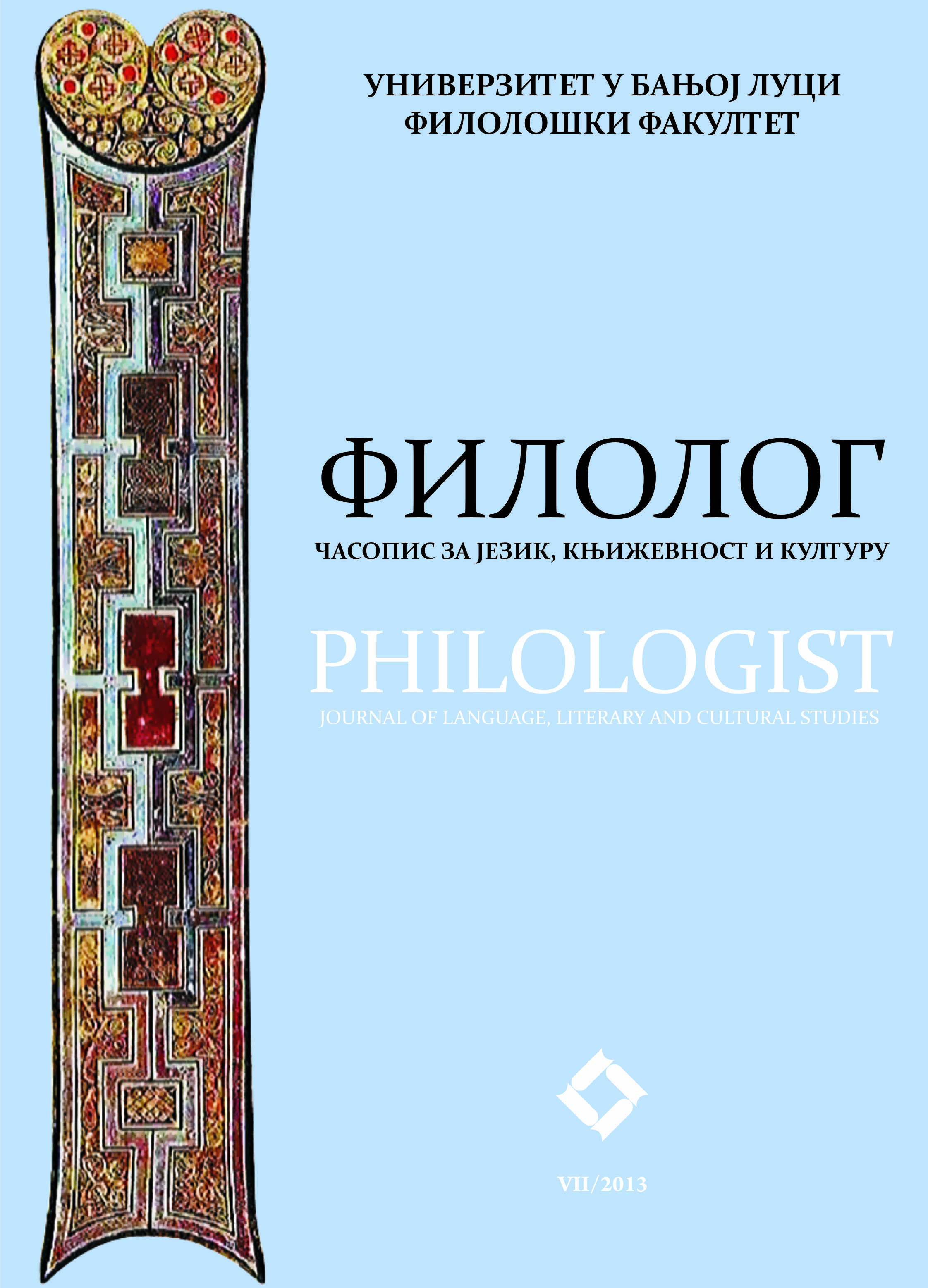
By means of a critical analysis of translation of chapter titles and subtitles in the novel The Tin Drum by Gunter Grass, the author raises the issues of translating poetic titles, with a view to pointing to the necessity of one having a solid command of the language, the piece itself, its writer, as well as its overall context in terms of literary history, literary theory, and culture, in order to deliver an adequate result.
More...
This paper aims at presenting the character of the intellectual woman in the Bildungsroman of Nessuno torna indietro (There is no coming back for anybody) by Alba de Céspedes, an Italian author. In this novel, Alba de Céspedes shows, for the first time, the relation between identity and intellectual work, revealing both the advantages and disadvantages of that relation through the characters of Silvia and Augusta, who represent an intellectual branch of a group of eight young women.
More...
This paper centres on the character of Stephen Dedalus in James Joyce’s novels A Portrait of the Artist as a Young Man and Ulysses. Joyce presents the late nineteenth-century Irish society and its complex sense of historical, political and religious forces which influence or reinforce an individual’s perception and behaviour. Through the character of Stephen Dedalus, Joyce struggles to break free of Irish stereotypes, and thus, challenges the stereotypical relationships between church and state, religion and parishioner, family and tradition. Also, the paper focuses upon the shift in the sensibility and development of Stephen Dedalus. This shift enables him to expand psychologically and transcend beyond the fixity of the traditional ideas and values. The paper suggests that Stephen Dedalus is a modernist character – he seeks his own identity in the complexity of modern experience, choosing the hermetic life of an artist rather than accepting the role given to him by society and culture. However, his strong sense of identity later turns out to be no more than a delusion. He remains a brooding, apathetic young man whose creative muse seems to have let him down; he is a poet that barely rises above the level of mediocrity.
More...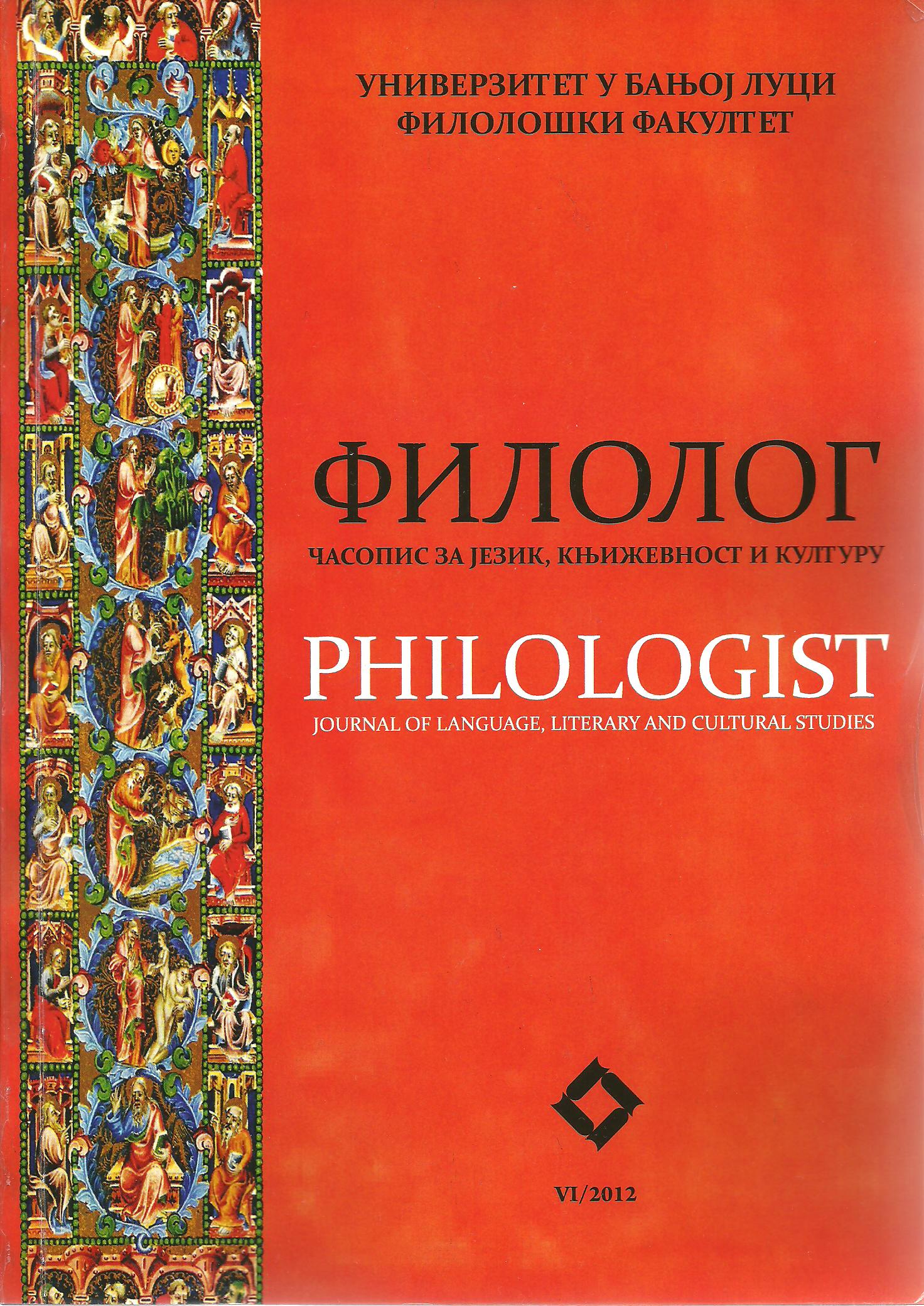
Although proverbially considered a writer of exceptionally tragic anthropological vision, Andrić is a prime humourist. Seemingly contradictory at first glance, this claim makes perfect sense when the notion of humour is dislodged from the realm of common language practice and examined more closely in the light of aestheticism and literary theory, by means of which a clear division emerges, which separates humour from other laughter-generating literary devices, such as irony, comedy and the grotesque. The basic feature of genuine literary humour is reflected in its extreme closeness with the tragic elements in any given text, and this is precisely what makes interpretations of Andrić in this context purposeful. The humour in his text is sometimes founded on oral traditions and a superb knowledge of local folklore, as is the case in his novel The Bridge on the Drina, and sometimes thrives on the clash of cultures and civilisations, different customs and mentality, as seen in The Days of Consuls. Regardless of whether we talk of Vuk’s humour or the Babel’s humour, it is the one element in Andrić’s novels that most successfully marks the tragic elements in terms of style, sometimes it even goes beyond and becomes a form of surpassing the absurdity of human existence in an artistic fashion.
More...
Alternative spaces within the science fiction novels of Philip K. Dick can be analysed in the context of Michel Foucault’s six principles of heterotopia and some tendencies in the transformation of urban spaces. Heterotopias in Dick’s fiction act as ontological destabilisers that reconfigure the familiar and create new, alternative realities. In Ubik and A Scanner Darkly, by redefining and questioning the relations between the known spaces, Dick creates new, different, altered spaces, built on the border of reality and imagination, thus challenging the standard norms and generally accepted principles of perception, spatiality and linear time. Dick’s spaces, combined of imagination and reality, imply that there is more than one reality, as well as that reality perceived as objective is yet another illusion.
More...
The paper deals with the relationship of visual and narrative elements in two novels by Mileta Prodanović: Ultramarin and Kolekcija. The introduction presents some of the assumptions of visual culture and its impact on everyday life and work. It also endeavours to explain the concepts of “image”, “likeness” and “visual/ mental representations”. In this sense, the author shares the opinion of William Thomas Mitchell, who believes that the image should not be taken as a picture – something visible, but as a spiritual resemblance, both within the religious context, and beyond. By examining the meaning and characteristics of visual and textual symbols, the author prepares the theoretical groundwork for the first chapter in which she deals with the novel Ultramarin. Here, visual and narrative elements are viewed as perfectly supplementing one another, with the mutual aim of creating a work of art. Prodanović’s methods of overlapping symbols, images and words are interpreted in the light of modern image theories and journey motifs - both physical and mental. In the second chapter, the paper deals with the novel Kolekcija, where the visual element demonstrates its power to the limit of human comprehension and beyond, entering the domain of science fiction. In this part of the paper, the author examines Prodanović’s storytelling skills that bridge the technological gap between the two historical moments in the novel, with particular emphasis on the universality and timelessness of the story and symbols. The third part is the concluding part, where the success of Prodanović’s experiment is summarised.
More...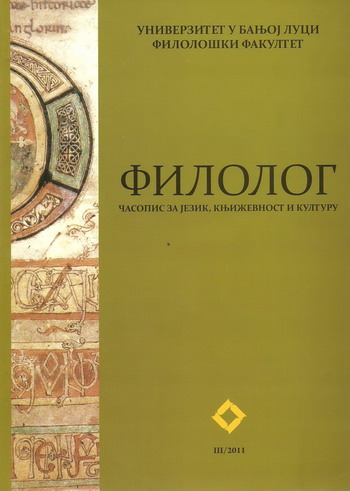
Review of: Suzanne Keen, Empathy and the Novel, Oxford: Oxford University Press, 2010.
More...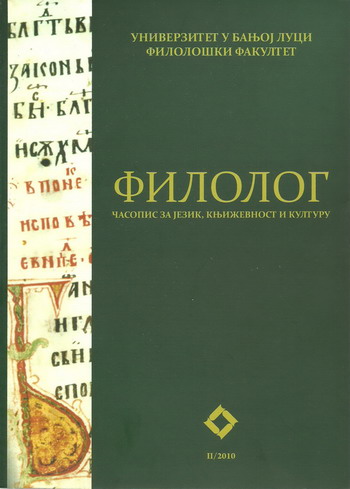
The paper aims to point out to an unbreakable bond between reading, writing and listening to music in Proust’s oeuvre. In his essay On reading, Proust gives us, while discussing the purpose and significance of reading, a hint of the narrative technique which utilizes some of the specific features of musical language. It is exactly the technique that the writer’s subsequent writing titled The quest for the time lost will be founded upon. Thus music becomes the literary model in Proust’s oeuvre and binds itself to the workings of random memory, simultaneously binding the principle capable of selecting and organizing the elements necessary to expand the possibilities of a literary word.
More...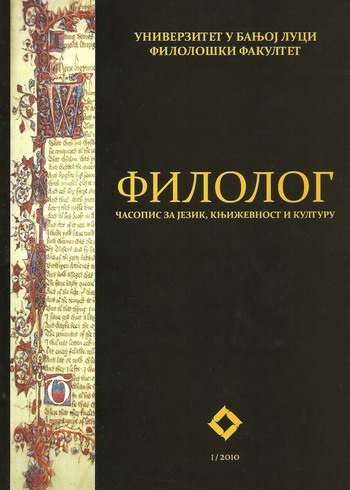
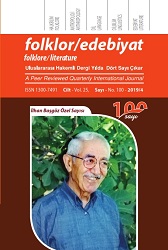
Academic Serdar Öztürk made a remarkable and extensive study on scientific researches of İlhan Başgöz (Birth 1923 – Sivas). Researcher Serdar Öztürk made very important detections about scientific studies of İlhan Başgöz in this study. One of these detections is that İlhan Başgöz united communication science with folklore. Serdar Öztürk states that the main skeleton of the method İlhan Baştürk used for studying folktales consists of arguments of representative school and he determines that according to İlhan Başgöz oral narrative is a social representation. Serdar Öztürk, based on the idea of telling a story being a social representation and opinions he stated in this context, models İlhan Başgöz’s perception of social representation. He creates a diagram of communication of the narrator between near and distant environment and audience. With this diagram, Serdar Öztürk makes İlhan Başgöz’s story examination style clear and understandable. This study named “An Attempt to Read the Novel Named Bağrıyanık Ömer Using Social Representation Model” aims to examine the novel using the diagram created by Serdar Öztürk as the base. The first edition of this novel written by Mahmut Yesari (1895-1945) was made in 1930. This novel, which is considered as one of the firsts of our literature in terms of having a child as the protagonist, combines traditional and modern narrative. This study is in the form of applying a method applied by İlhan Başgöz to examine a traditional narrative to a modern narrative. In other words, it is the application of İlhan Başgöz’s method formulated by Serdar Öztürk as “a social representation” to the novel. With this practice, İlhan Başgöz’s approach that unites communication science and folklore is aimed to be carried out on a text that combines the traditional with the modern, but that is the product of written culture rather than oral. Thus, Bağrıyanık Ömer was examined with a new perspective for the study of literary texts and with a model covering multiple disciplines; the question of whether the novel is a social representation was sought.
More...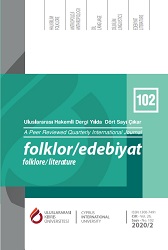
Colonialism, dating back to the discovery of the American continent, appears as both economic and cultural domination. Cultural domination is realized by orientalist discourse that legitimates the Occident’s activities of civilization in colonies. The orientalist point of view, enclosing the Orient in a time behind the moment when the Occident live in a place far from himself, reaches the current era by repeating itself for hundreds of years; and this knowledge produced about the Orient is used as a fiction material in literary works. These literary works describe the Orient as bizarre and mysterious. At this point, just as postmodernism is the critique of modernism, the postcolonial approach involves the criticism of orientalism and colonial order. This study examined Jules Verne’s narrative of Around the World in Eighty Days in the framework of postcolonial theory as a critical theory. In this novel, the subjectobject, power-other, master-slave and masculine-feminine dialectics are fictionalized with an Orientalist point of view. When viewed from postcolonial theory, it can be seen that the Orient is represented as an object of desire in which the Occident can fulfill the subconsciously repressed feelings. No matter how far the East is, the world is round and the voyager will return to his starting point, the Occident. Therefore, the study emphasized that the Orient is the lower-self/Other of the Occident.
More...
Since ancient times, hunger, drought, animosity or the search for better education caused people to leave their lands and go to other places or other countries. Inevitably, these types of moves bring the phenomenon of culture to the fore. This article discusses how the Zaza /Alevi born Dutch writer Murat Işık, who witnessed emigration from Turkey to The Netherlands, deals with the factors of internal migration in his novel Verloren Grond (Lost Ground), which bears traces of his family’s biography. In the work, migration of the Uslu family brings to the agenda feelings, hopes and disappointments of family members. The novel is examined with the aid of both the push-pull model of migration and pushing and pulling factors leading to migration. The most important pushing factor in the novel is the father’s leg amputation. The ground inherited from his father is thought to be the only pulling factor for the family because it will provide them with economic salvation. The phenomenon of land is very important for human beings because it represents ancestral heritage, belongingness, identity and freedom. The second important pushing factor is an earthquake, which triggers the idea of going to the big city as a pulling factor. After the migrations, the members of the family experience various types of social and cultural adaptation problems. Thus, through the novel we realize that the phenomena of migration are economically, socially and culturally important for the Uslu family, and consequently have positive and negative results for each individual.
More...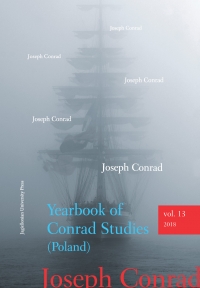
The aim of this paper is to analyze the spectral presence of J. Conrad’s short story “The Duel” in Eustachy Rylski’s novel Warunek [The Condition] employing the methodology of hauntology. In the present paper the term hauntology will be used as an umbrella concept for the investigation of the interpretative possibilities offered by the figure of spectre and phantom text present in literary narratives. Analysing the process of haunting or in other words, the process of the text being re-visited by some other older story, new/hidden meaning arises. In this way we can trace the action of opening of the text so that something from the past might enter and shutter its original structure.
More...
Review of Maya Jasanoff, The Dawn Watch: Joseph Conrad in a Global World, Penguin Press 2017, pp. 376, with Index, maps and illustrations
More...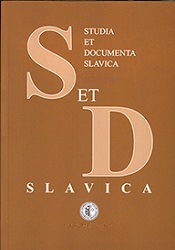
H. G. Wells's The New Machiavelli (1911) was the bold statement of the rights of women in the new century. It was, of course, useless to deny that The New Machiavelli had a sexual base. The sexual relations between men and women had come to dominate Wells's mind, and it was going to be an important topic in his books. Wells's novel, which is a cry of anger against the oppressive conventions of society, is in part based on autobiographical detail of Wells's own life, his affair in 1908 with Amber Reeves, a brilliant Cambridge graduate. Central to Wells's doctrines of male-female relationships is his understanding of the duality of love. Wells stresses the importance of two people loving each other at the level of the mind as well as the body. Work is considered by Wells as important as sexual relationship. In both cases the dual nature of love, that is fulfillment both physically and spiritually, is deemed necessary for a true and satisfactory relationship. In his feminist texts Wells distinguishes clearly between male ideals of marriage and womanhood, and emancipated female characters who are aware of what they are doing, but consider it their right and privilege to lead the kind of life they wish to, and are prepared t.o take the consequences.
More...
The aim of this essay is to present Jacob Frank’s Words of the Lord as the first (and perhaps the last) Polish picaresque novel which abounds in semi-fantastical, kabbalahinspired stories, depicting a stormy life of a protagonist who calls himself an “am ha’arets” (a man of the land or a village idiot in Hebrew) and brags of his infinite and supranatural vitality that helps him to overcome all adversities. The essay considers a hypothesis formulated by Yirmiyahu Yovel, according to which the picaro novel emerged in 16th century Spain, in the milieu of the Marranos or conversos, i.e. the Jews who were forced to convert to Christianity, but usually retained some elements of their Judaic faith undercover. This hypothesis seems to fit perfectly well to Jacob Frank’s gadki (stories) as he himself can be regarded as the paradigmatic Marrano: a willing convert to Catholicism, whose aim was to “messianize” the Christian religion from within. The essay ends with a comparison of Frank’s messianic ambitions to Jacques Derrida whose messianicite operates on a similar Marrano basis.
More...